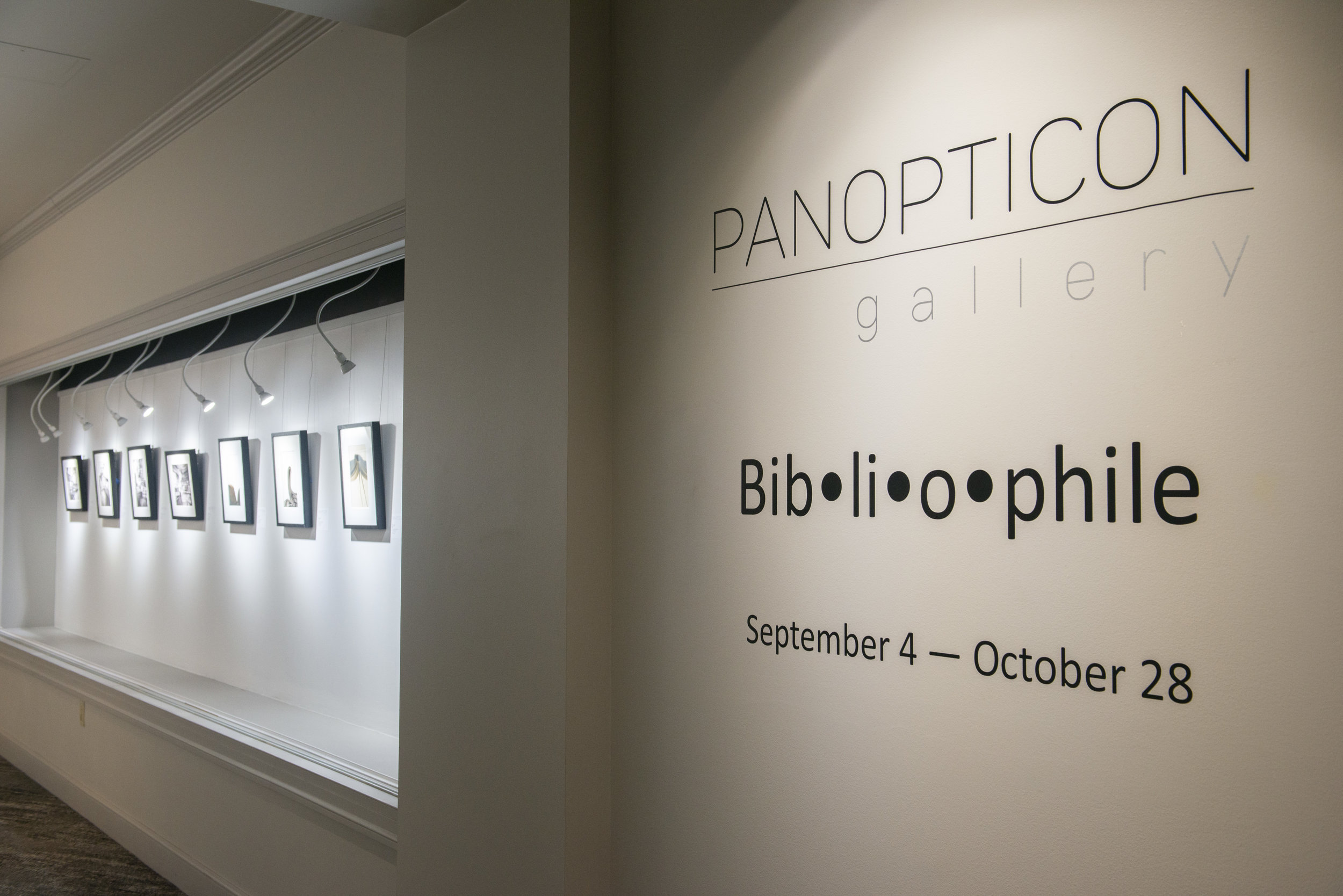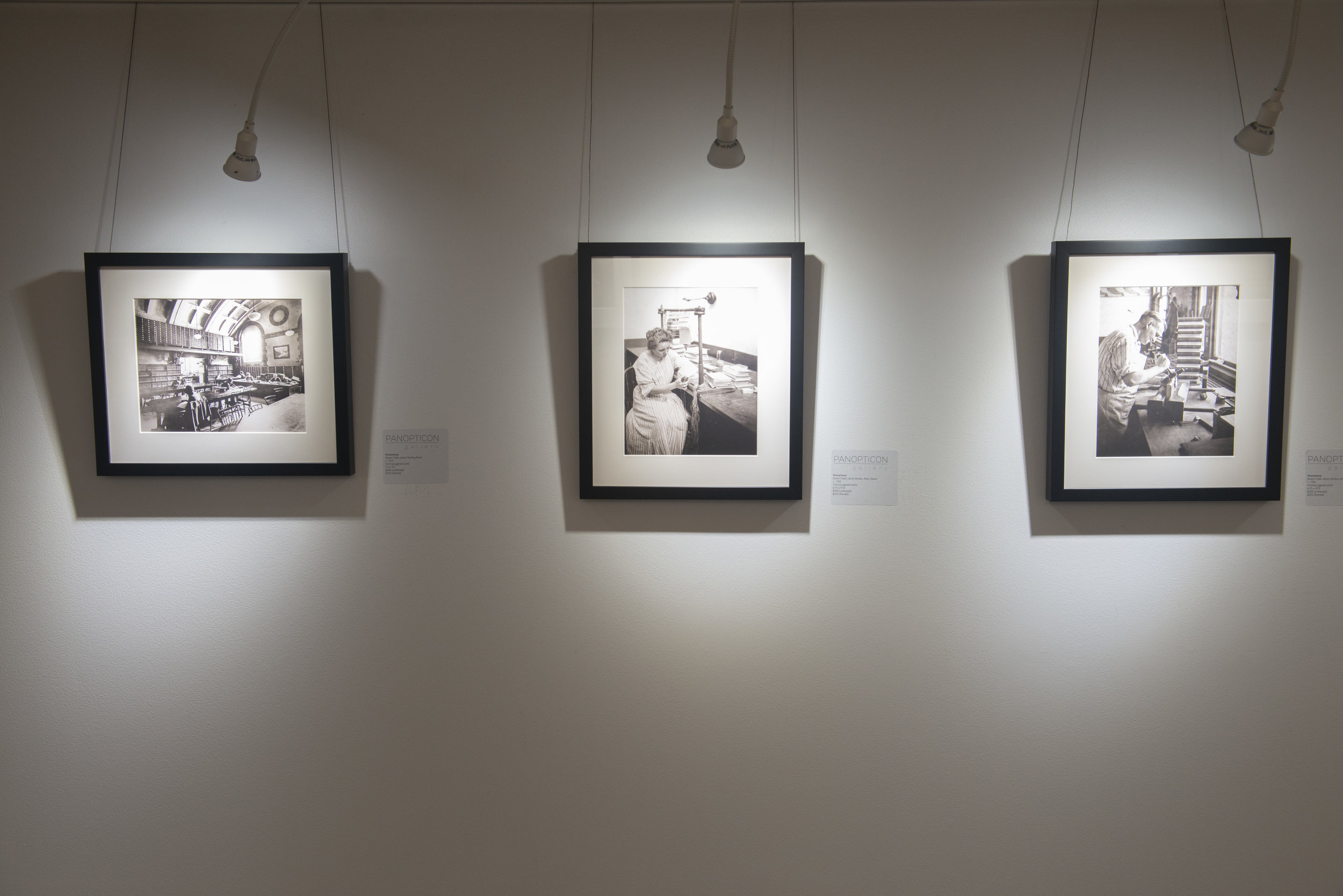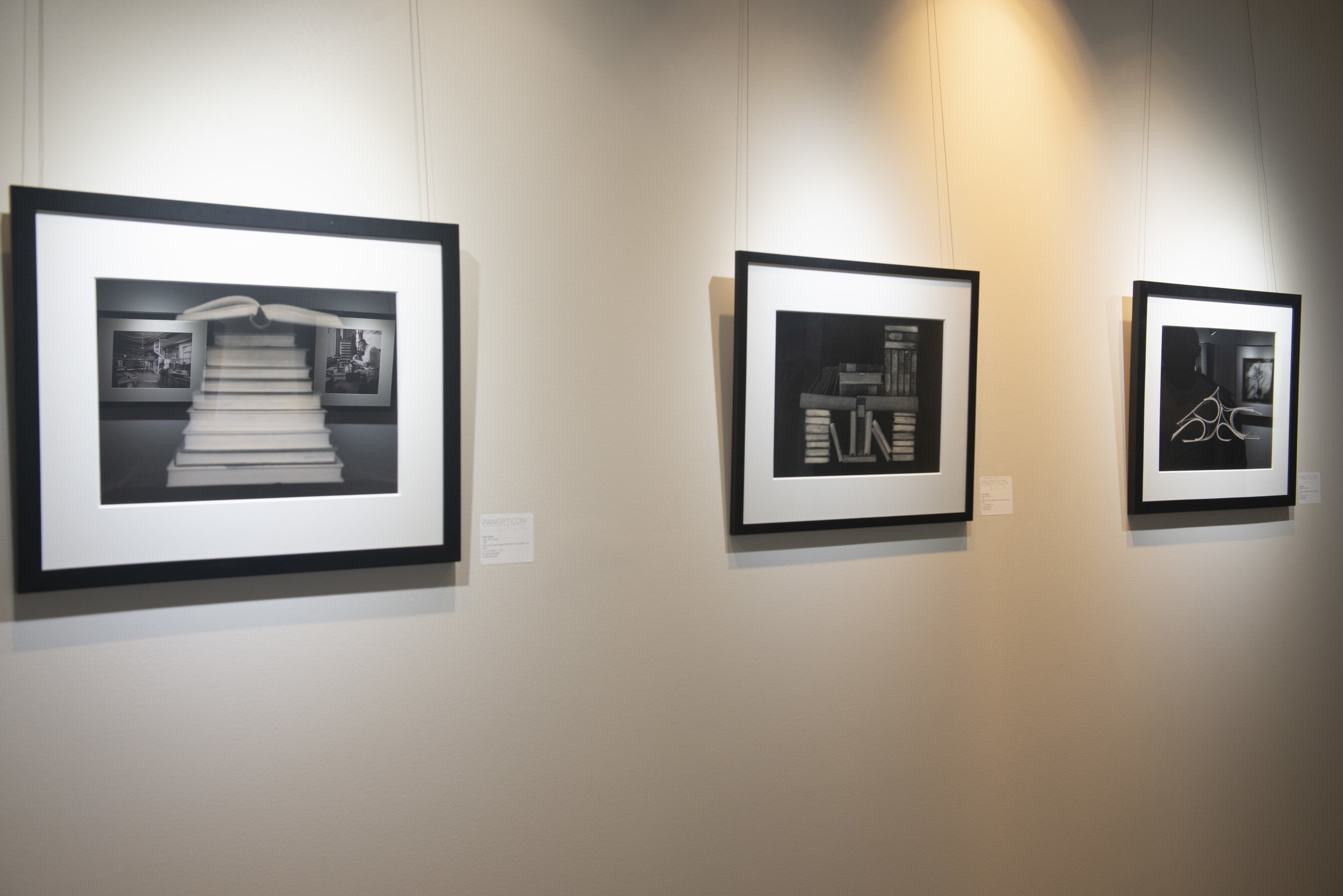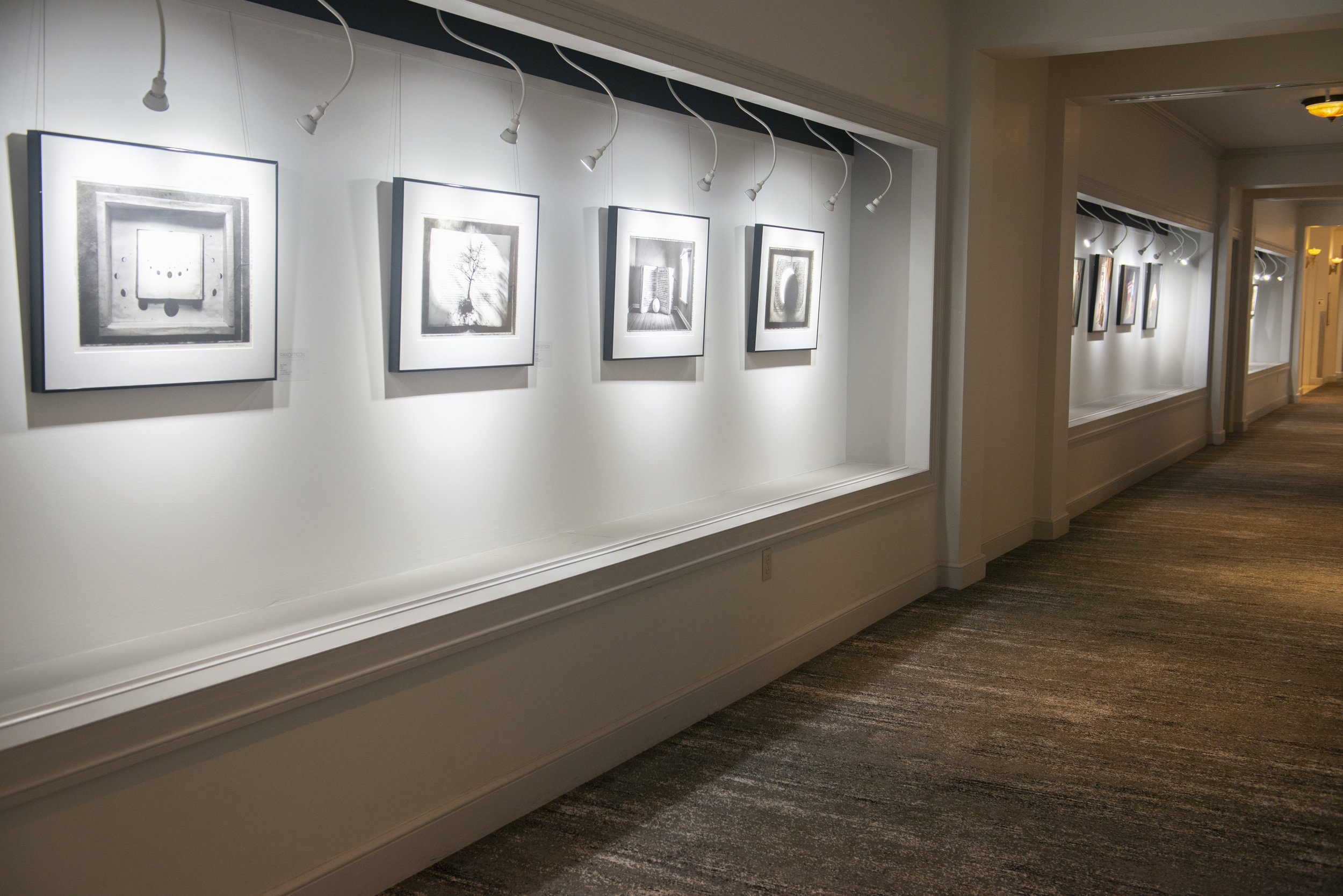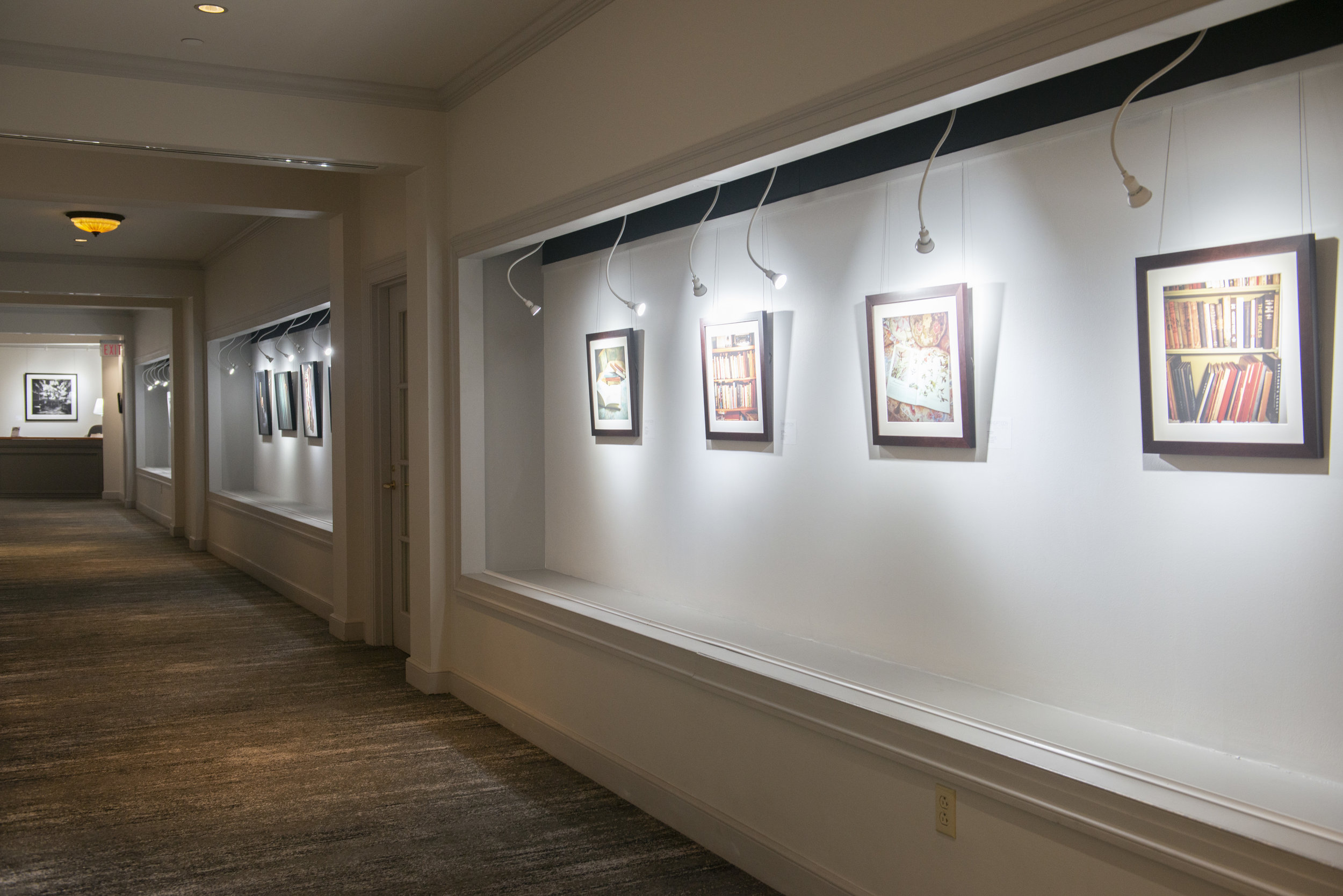Exploring the Book as Artistic Subject in Panopticon Gallery's Bibliophile
By Jessica A. Kent
Oct. 20, 2018
Tucked into the Hotel Commonwealth in Kenmore Square, between the main lobby and Eastern Standard, is the Panopticon Gallery, one of the oldest fine art photography galleries in the country. It was founded in 1971 by Tony Decaneas in a basement gallery in Back Bay, and moved to Newbury Street and Waltham before its space - a two-corridor hallway with recessed walls - was created specifically for it as the Hotel Commonwealth was being built in 2004. It therefore has the unique distinction of being a fine art photography gallery in the middle of a busy hotel in one of the busiest intersections of the city. As such, it’s open 24 hours a day - a luxury other galleries do not have - and its artwork is seen by a crowd with heavy turnover who may not have stepped foot in a traditional gallery before, but suddenly find themselves in the midst of photographic artwork, say, on their way to dinner. Prices are also displayed, letting viewers know that a piece of artwork is affordable, and a good place to start a collection.
It is in this accessible little space where the current exhibition, Bibliophile, is being shown. Bibliophile is described as “a studious exhibition for lovers of photography and the printed page,” and features work by Thomas Allen, Carolyn Hampton, Sean Kernan, Aline Smithson, Mark Douglas, Fawn Potash, and Thomas Marr. Each piece contains something about books: A stack of books photographed in black and white, book pages posed to create abstract design, pulp novel covers brought to life, even scenes from local libraries. The book is the focus.
“This was a show I’d been thinking about for roughly a year,” Kat Kiernan, the director of the Gallery, explained on a rainy afternoon when I stopped by. As we stood in the long corridor that contains the exhibit, there were multiple times when we moved aside for people coming from the restaurant, its music heard from down the hallway. As they passed through, the photographs on the wall caught their eyes.
Because of such high foot traffic, exhibits are rotated every two months, which allows for more seasonable themes. Kiernan knew she wanted to do the exhibit in the Fall. “With Boston being such a college town, I wanted to do a quieter, studious exhibition. Books are not particularly colorful, so the muted palette of the show was much more appropriate.”
With this idea in mind, Kiernan then sought out the pieces to display - all guest artists as well - and it is the first time the Gallery has blended historic pieces and contemporary photography. Additionally, she was able to acquire turn-of-the-century photographs of the Boston Public Library and Boston Athenaeum, and while those photographs are not the originals, the Gallery did the restoration and the printing themselves.
As stated before, the focus of each of the artists is the book in some way. Mark Douglas’s photographs have transformed the book into a series of lines, arches, and waves that seem to suggest a book rather than show it. As Kiernan describes it, “We still know it’s a book, nobody needs to tell us that. But it’s become its own thing. It’s more of a picture about something rather than a picture of something.” Carolyn Hampton’s “The Lonely Bookkeeper” shows a swirl of pages surrounding the dreamy countenance of a young librarian. Aline Smithson’s photographs document what seems to be a home library, the colors of cloth binding juxtaposed against one another. Sean Kernan’s photographs are more imaginative and surreal; pre-digital, his photographs of a giant book in a room, a tree floating in front of a poem, were crafted as such and not created post-production. “This is all optical phenomenon, so what you’re seeing is what was there in front of the camera,” Kiernan explains.
Fawn Potash’s series are black and white books or magazines against a black background, ethereally floating in the air. One photograph, depicting the page edges of a stack of books seems like a simple pyramid, until you read the title - “Stolen Pile of Books” - and wonder at their origin and truth. Thomas Allen’s collection are dime-novels come to life, characters sliced from covers in the act of falling through pages, a rocket blasting out of a book jacket. Thomas Marr’s collection, restored from the originals, depicts interior scenes from the Boston Athenaeum, iron balconies and staircases, shelves packed with books and lined with artwork (looking significantly more cluttered than it is today). Additionally, anonymous photographs from the early 20th century depicting the old Boston Public Library book bindery are featured. One has to wonder who the people in the photograph were - a woman threading spines, a man finishing a cover - and how they went about their day, where they lived, what they witnessed in Boston in the 1920s.
What’s evident from the photographs is that books, which are a medium meant to be read, are not meant to be read in these cases, and in the rare moments when we glimpse text, it’s not necessarily part of the intention of the photograph. Which raises an interesting question: Is a book something more than just the text it contains? The rise of e-readers has been a boon to some, but a good numbers of readers still believe that text, ink, pages, and covers work in tandem. “I think that concern for [the death of the printed page] made people really attentive to the books that they own as an object, because what if they disappeared?” Kiernan responds when asked about the book as object. “And a book is also something to be passed down, books are also things that gain value over time. They do become antique objects, they do have a value, whether that’s sentimental or sometimes monetary, they’re rare…” Why would they be appealing to these photographers then? “I think books, while important to a lot of people, are particular important to artists because they have such a connection to the physicality of an object. It makes sense for them to use it as their subject matter.”
For the true bibliophile, books have their own unique values, and Bibliophile is the opportunity to look at books in a different way - and to see how specific artists, both past and present, looked at books through literally their own lens.
Bibliophile has been extended through November 2, 2018. The Gallery is open 24 hours, with staff on hand Monday through Saturday, 10:00am - 6:00pm. More information, and a preview of the photographs, can be found at the Panopticon Gallery website.
Photos courtesy of Panopticon Gallery.
